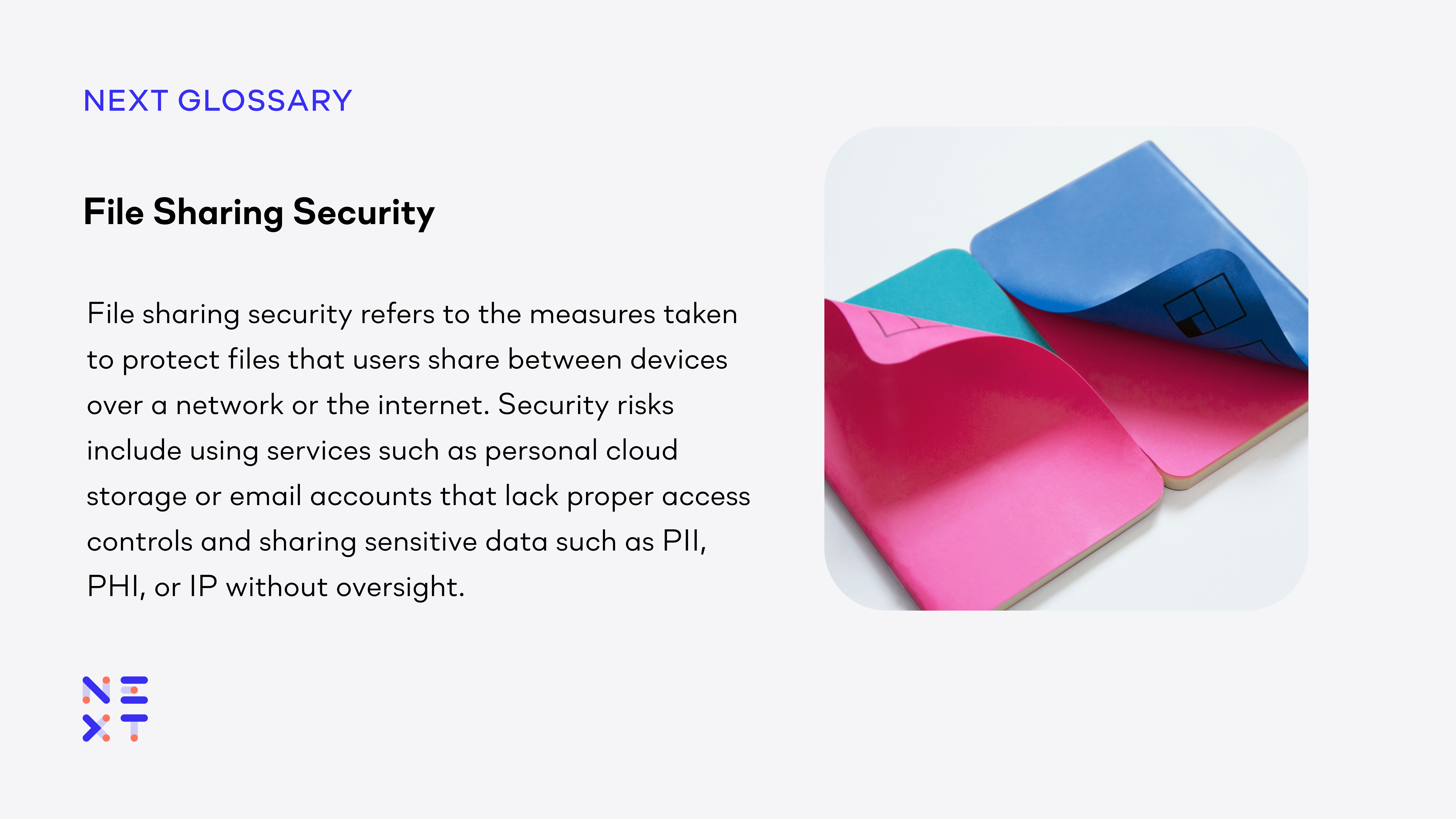File sharing security refers to the various policies, procedures, and technical measures implemented to ensure the safe exchange of digital information within a network or over the internet. In the context of insider risk and data loss prevention, it becomes even more critical, as it's aimed at reducing the chance of sensitive data falling into the wrong hands, either through deliberate malicious activity or accidental missteps by internal members of an organization.

Insider risk pertains to the potential threat that people within an organization pose to its information security. These could be employees, contractors, or any other insiders who have authorized access to the company's networks, systems, or data.
They could intentionally or unintentionally compromise data security, leading to data breaches or loss. For example, they might share sensitive files with unauthorized parties, either maliciously or inadvertently.
Data loss prevention (DLP) is a set of tools and processes designed to ensure sensitive data is not lost, misused, or accessed by unauthorized users. DLP can identify, monitor, and protect data in use (endpoints), data in motion (network traffic), and data at rest (storage).
Key components of file sharing security include:
- Encryption: One of the most effective ways to secure data, encryption transforms files into unreadable ciphertext before sharing. It ensures that even if files are intercepted during transit, their contents remain inaccessible to unauthorized users.
- Access Controls: To manage who can access what, mechanisms such as user authentication, authorization mechanisms, and role-based access controls are implemented. These controls limit access to files based on the user's role or specific privileges within the organization.
- Secure File Transfer Protocols: File sharing should be done using secure file transfer protocols such as HTTPS (Hypertext Transfer Protocol Secure) or SFTP (SSH File Transfer Protocol). These protocols provide an additional layer of security during file transmission.
- User Awareness and Training: Given that human error is often a weak link in security, educating individuals about the risks associated with file sharing and the best practices to maintain security is crucial. This includes training on secure file sharing procedures, recognizing potential threats, and understanding the implications of non-compliance.
- Data Loss Prevention (DLP): DLP solutions play a vital role in preventing unauthorized users from accessing, sharing, or deleting critical data. They monitor, detect, and block sensitive data while in use, in motion, or at rest, ensuring compliance with security policies.
- Secure File Sharing Solutions: Enterprise File Sync and Share (EFSS) platforms and other similar solutions offer enhanced security features, including encryption, user authentication, access controls, audit trails, and remote wipe capabilities.
- File Retention Policies and Expiration Mechanisms: Establishing and implementing file retention policies and automatic expiration mechanisms for shared files can reduce the risk of data leakage or unauthorized access.
- Auditing and Monitoring: These mechanisms track file sharing activities, detect unauthorized access or sharing attempts, and help investigate any security incidents or policy violations.
- Compliance Requirements: Compliance with data protection regulations (e.g., GDPR) or industry-specific standards is a significant part of file sharing security. These legal frameworks guide how personal or sensitive data should be handled and shared.
These measures, among others, aim to create a secure environment for file sharing that minimizes insider risk and aids in data loss prevention. However, security is a dynamic process, so it's essential to continually reassess and update these measures as new threats and vulnerabilities emerge.
The ultimate aim of file sharing security is to ensure that data remains protected at all stages, and any potential risks or threats can be promptly identified and mitigated.

